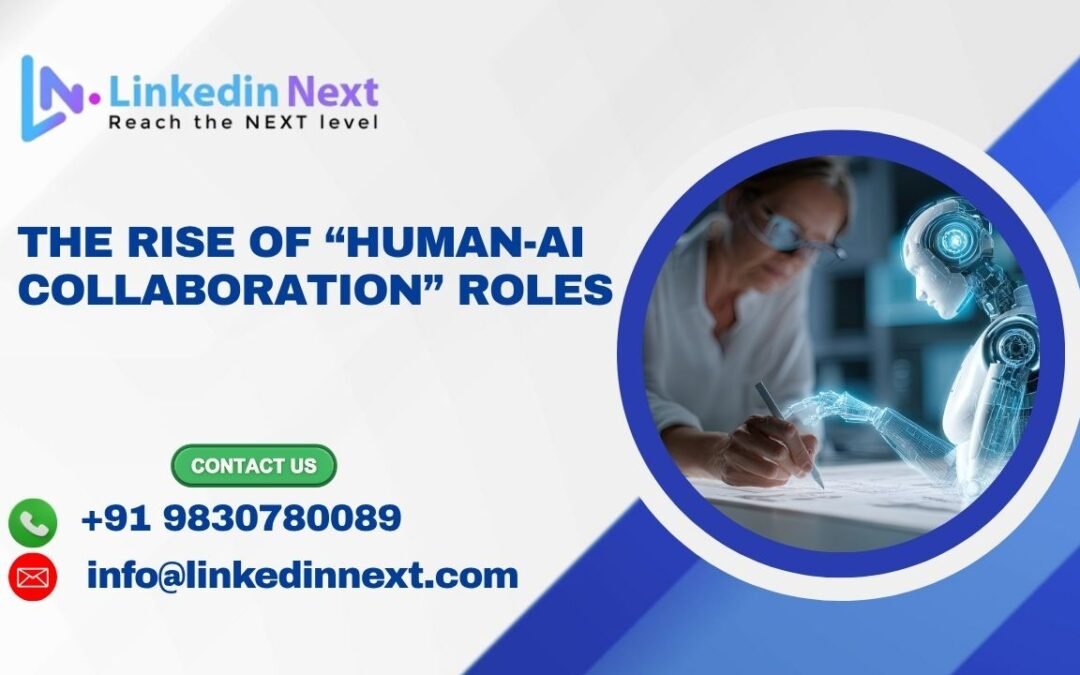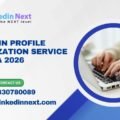The Rise of “Human-AI Collaboration” Roles
The Rise of “Human-AI Collaboration” Roles. As the world advances into an era dominated by Artificial Intelligence (AI), the nature of work is undergoing a profound transformation. Far from replacing humans, AI is increasingly becoming a collaborative partner—one that enhances decision-making, creativity, and productivity across industries. This evolution has given birth to a new wave of professions known as “Human-AI Collaboration” roles, where human intelligence and machine intelligence intersect to create unprecedented opportunities for innovation.
In this comprehensive article, we explore the rise, impact, and future potential of these hybrid roles, and why they represent the next frontier of the global workforce.
Understanding Human-AI Collaboration
Human-AI collaboration is the integration of human intuition, creativity, and emotional intelligence with AI’s analytical power, speed, and precision. Instead of viewing AI as a replacement for human labor, this model sees AI as a co-worker—a digital assistant that helps humans achieve better outcomes.
In industries like healthcare, finance, marketing, and manufacturing, AI augments human capabilities by automating routine tasks, leaving employees free to focus on strategic, interpersonal, and creative challenges. This synergy is driving the creation of new job roles centered around managing, training, and optimizing the collaboration between humans and intelligent machines.
The Evolution of Work in the Age of AI
The early narrative of AI-driven automation sparked fears of job loss. However, the reality of 2025 paints a different picture—one of job transformation rather than destruction. AI is enabling humans to become more productive, efficient, and innovative.
According to recent studies, over 60% of global organizations have already adopted AI tools in at least one business function, leading to the creation of specialized roles that blend technical and interpersonal expertise.
As organizations integrate AI into their daily operations, the need for professionals who can bridge the gap between humans and machines is growing exponentially. These new roles demand soft skills such as empathy and communication, combined with AI literacy and technical understanding.
Top Emerging Human-AI Collaboration Roles
1. AI Interaction Designer
AI Interaction Designers craft the ways in which humans communicate with AI systems—through chatbots, virtual assistants, or autonomous machines. Their role focuses on creating seamless and intuitive interactions that enhance user experience.
Key Skills: UX design, conversational AI, linguistics, emotional intelligence
Industries: Tech, e-commerce, customer service, and education
These professionals ensure that AI systems feel accessible, human-like, and trustworthy, shaping how people engage with intelligent technology daily.
2. AI Trainer and Human Feedback Specialist
AI systems learn from humans—and that’s where AI Trainers come in. They provide contextual feedback, data labeling, and reinforcement learning inputs to help AI models understand human behavior, tone, and ethics.
Key Skills: Data annotation, pattern recognition, ethical awareness
Industries: Healthcare, logistics, autonomous vehicles, and language processing
By refining AI accuracy, these specialists play a pivotal role in making machines more empathetic and reliable.
3. Human-AI Workflow Integrator
A Human-AI Workflow Integrator designs processes that balance automation and human judgment. They identify where AI can add value while preserving the critical human element in decision-making.
Key Skills: Process design, data analysis, strategic thinking
Industries: Manufacturing, logistics, and enterprise operations
These experts ensure AI tools complement human teams instead of competing with them, fostering efficient hybrid workflows.
4. AI Collaboration Strategist
Organizations need visionaries who can shape how humans and AI work together. AI Collaboration Strategists define long-term frameworks for AI adoption, employee training, and innovation alignment.
Key Skills: Leadership, communication, AI literacy, policy development
Industries: Consulting, finance, corporate innovation
This role requires strategic insight into both business goals and technological trends, making it a cornerstone of digital transformation initiatives.
5. Human-AI Creativity Manager
In creative industries, AI tools like DALL·E, Midjourney, and ChatGPT are transforming how art, marketing, and media are produced. Human-AI Creativity Managers guide teams in using AI as a creative collaborator, blending algorithmic possibilities with human imagination.
Key Skills: Creative direction, AI art tools, storytelling, brand strategy
Industries: Marketing, entertainment, design, and publishing
They help organizations leverage AI not just for automation, but for inspiration and innovation.
6. AI-Assisted Decision Analyst
These professionals work alongside AI-powered analytics tools to interpret data, generate insights, and guide strategic business decisions. They understand both machine-generated intelligence and human intuition, making them invaluable in data-driven organizations.
Key Skills: Data visualization, critical thinking, communication
Industries: Finance, healthcare, supply chain management
By combining quantitative analysis with qualitative reasoning, they enable smarter and more ethical decision-making.
The Soft Skills Powering Human-AI Collaboration
While AI can process vast datasets at lightning speed, it lacks the emotional intelligence and moral compass that define human interaction. Hence, soft skills are becoming the most valuable assets in AI-powered workplaces.
-
Empathy: Understanding emotional nuances that AI cannot detect.
-
Creativity: Generating novel ideas and imaginative solutions beyond algorithmic prediction.
-
Communication: Translating complex AI insights into human language.
-
Adaptability: Learning and evolving with ever-changing AI technologies.
-
Ethical Judgment: Ensuring responsible and fair AI deployment.
The future belongs to professionals who can combine technical fluency with human insight, ensuring technology remains an enabler, not a controller.
Industries Leading the Human-AI Collaboration Revolution
Healthcare
AI assists in diagnostics and data analysis, while doctors provide human empathy and contextual judgment. Collaboration between humans and AI is enhancing patient care and saving lives.
Education
Educators use AI-driven analytics to personalize learning, while maintaining the emotional connection and mentorship essential for student growth.
Finance
AI automates fraud detection and data modeling, while human advisors interpret the results to guide ethical financial decisions.
Marketing
Marketers use AI for audience segmentation and content optimization, while human strategists inject creativity and emotional resonance.
Manufacturing
AI-driven robots handle repetitive tasks, while human workers oversee quality, safety, and innovation in production design.
The Ethical Dimension of Human-AI Teams
With greater collaboration comes greater responsibility. The integration of AI into human workflows introduces ethical challenges such as bias, transparency, and accountability.
Human-AI collaboration roles emphasize responsible innovation, ensuring that AI applications are aligned with societal values and moral principles. Professionals in these roles serve as ethical gatekeepers, guiding AI behavior through continuous human oversight.
Preparing for a Career in Human-AI Collaboration
Success in this emerging field requires a balance of technical knowledge and emotional intelligence. Here are key steps to prepare:
- Develop AI literacy through courses in machine learning and data analytics.
- Enhance soft skills—especially communication, empathy, and adaptability.
- Engage in interdisciplinary learning, combining tech with humanities or psychology.
- Gain hands-on experience with AI tools and automation platforms.
- Stay informed about AI ethics, governance, and policy developments.
The goal is not just to work with AI—but to lead it responsibly.
The Future Outlook: A Human-Centric AI Ecosystem
The future workforce will not be divided into “human jobs” and “AI jobs.” Instead, it will be built around human-AI teams that collaborate seamlessly. AI will handle data, calculations, and optimization—while humans provide context, compassion, and creativity.
This new paradigm represents the true essence of progress: technology amplifying human potential, not replacing it. Organizations that embrace this vision will enjoy greater innovation, inclusivity, and efficiency in the years ahead.
Conclusion: Empowering the Next Generation of Work
The rise of Human-AI Collaboration roles signifies a profound shift in how we define work, productivity, and intelligence. As AI continues to evolve, success will depend not on choosing between humans or machines, but on harmonizing their strengths.
The future belongs to those who can collaborate with technology, using it as a partner to achieve goals faster, smarter, and more ethically than ever before. This is not just a technological revolution—it’s a human transformation powered by AI.
Thank you for read our blog “The Rise of “Human-AI Collaboration” Roles”.
Also read our more BLOG here.
I hope this blog is helpful to you, if you have any question feel free contact us at
Call/WhatsApp: +91.9830780089 || Email: info@linkedinnext.com







Recent Comments